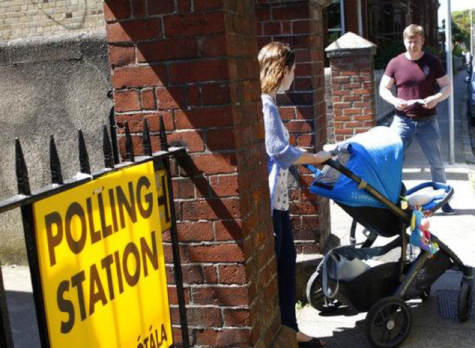How one woman’s death lead to Ireland’s abortion rights campaign
May 30, 2018

On May 25, Ireland overwhelmingly voted to repeal their eighth amendment, lifting a long-standing ban on abortion. However, it took the death of one woman to kickstart the campaign for abortion rights in this predominantly Catholic country.
In 2012, Savita Halappanavar, 31, died from septicemia caused by a miscarriage. She fell ill to the infection after being denied an abortion during the miscarriage, setting off calls for change across the Ireland.
When Halappanavar was 17 weeks pregnant, doctors told her she was having a miscarriage. They told her the baby would not survive, but according to her husband, since the fetus still had a heartbeat, they were not permitted to have the pregnancy terminated. Halappanavar and her husband were repeatedly told, “this is a Catholic country”.
“Savita asked if they could not save the baby could they induce to end the pregnancy. The consultant said, ‘As long as there is a foetal heartbeat we can’t do anything,’” said Halappanavar’s husband.
The family was repeatedly denied an abortion before the heartbeat finally stopped after two days. Halappanavar died the following day from the infection.
Professor Sir Sabaratnam Arulkumaran, former president of the Royal College of Obstetricians and Gynaecologists, lead the investigation into Halappanavar’s death. He responded to the mishap while campaigning for abortion rights, saying, “One of the things which was holding their hands back while they were looking after her was this eighth amendment issue because the baby’s heartbeat was there.”
Ireland’s eighth amendment was introduced by parliament in 1983. Since then, small movements to repeal the act have persisted. In 1993, a scenario involving a 14-year-old having to leave the country to receive an abortion made headlines but little significant progress followed.
But after Halappanavar’s death, rallies started almost immediately. Thousands began rallying outside the Irish Parliament building, and many vigils and marches followed, according to the New York Times. It didn’t take long for Halappanavar’s family to give permission to the growing campaign to use her image, and soon, the woman became a rallying cry across the country.
The official vote from the referendum tallied to over 66 percent voting “yes,” in favor of repealing the ban of abortion in Ireland. According to the New York Times, the results were shocking for many, as polls represented a tight race in the weeks leading up to the vote. Theresa Reidy, a political professor at the University College Cork, said she was very surprised at the results but that the campaign had been gaining representation in recent years.
Reidy said that recently, “the whole issue has broken apart” after many years of the campaign for abortion rights being “portrayed in very black-and-white terms, crude and simplistic terms like murder.”
For opponents of the movement in a historically Catholic country, many fought for the idea that abortion is murder and should be kept illegal. But the influence of the church has dropped dramatically recently, with just 20 to 30 percent of Irish people attending mass every week. That number was 80 to 90 percent when the amendment was ratified in 1983.
The Prime Minister of Ireland, Leo Varadkar, spoke after the vote. Despite campaigning for the “yes” campaign, Varadkar acknowledged the conservative voters, saying “I know today is not welcome and you may feel this country has taken the wrong turn, that this country is one you no longer recognize.”
“I want to reassure you that Ireland today is the same as it was last week, but more tolerant, open, and respectful.”
In the eyes of millions of Irish voters, this week has made the country more tolerant, open, and respectful. And although it comes too late for Savita Halappanavar and her family, the woman on the front of billboards and flyers across Ireland has made a difference in bringing change.






